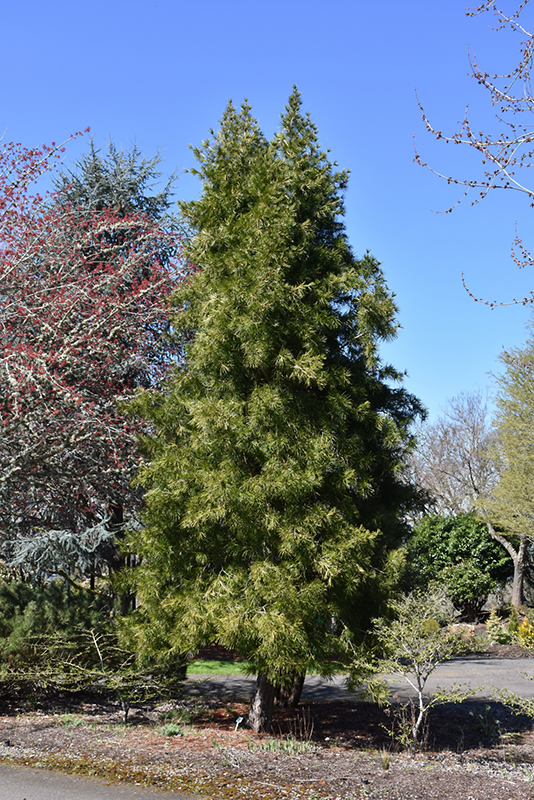Plant Finder
Japanese Umbrella Pine - New For 2025!
Sciadopitys verticillata
Height: 40 feet
Spread: 20 feet
Sunlight:
![]()
Hardiness Zone: 4
Other Names: Japanese Umbrella Pine, Koyamaki
Description:
Attractive dense evergreen with stunning large needles and exfoliating bark that is generally hidden from view; forms a dense pyramid, making it a nice specimen; susceptible to snow and ice damage
Ornamental Features
Japanese Umbrella Pine has rich green evergreen foliage on a tree with a pyramidal habit of growth. The large needles remain green throughout the winter. The brown fruits are held in cones in mid fall.
Landscape Attributes
Japanese Umbrella Pine is a dense evergreen tree with a distinctive and refined pyramidal form. Its average texture blends into the landscape, but can be balanced by one or two finer or coarser trees or shrubs for an effective composition.
This is a relatively low maintenance tree. When pruning is necessary, it is recommended to only trim back the new growth of the current season, other than to remove any dieback. It has no significant negative characteristics.
Japanese Umbrella Pine is recommended for the following landscape applications;
- Accent
- Vertical Accent
- Windbreaks and Shelterbelts
Planting & Growing
Japanese Umbrella Pine will grow to be about 40 feet tall at maturity, with a spread of 20 feet. It has a low canopy with a typical clearance of 1 foot from the ground, and should not be planted underneath power lines. It grows at a slow rate, and under ideal conditions can be expected to live for 60 years or more.
This tree should only be grown in full sunlight. It does best in average to evenly moist conditions, but will not tolerate standing water. It is particular about its soil conditions, with a strong preference for rich, acidic soils. It is somewhat tolerant of urban pollution, and will benefit from being planted in a relatively sheltered location. This species is not originally from North America.


